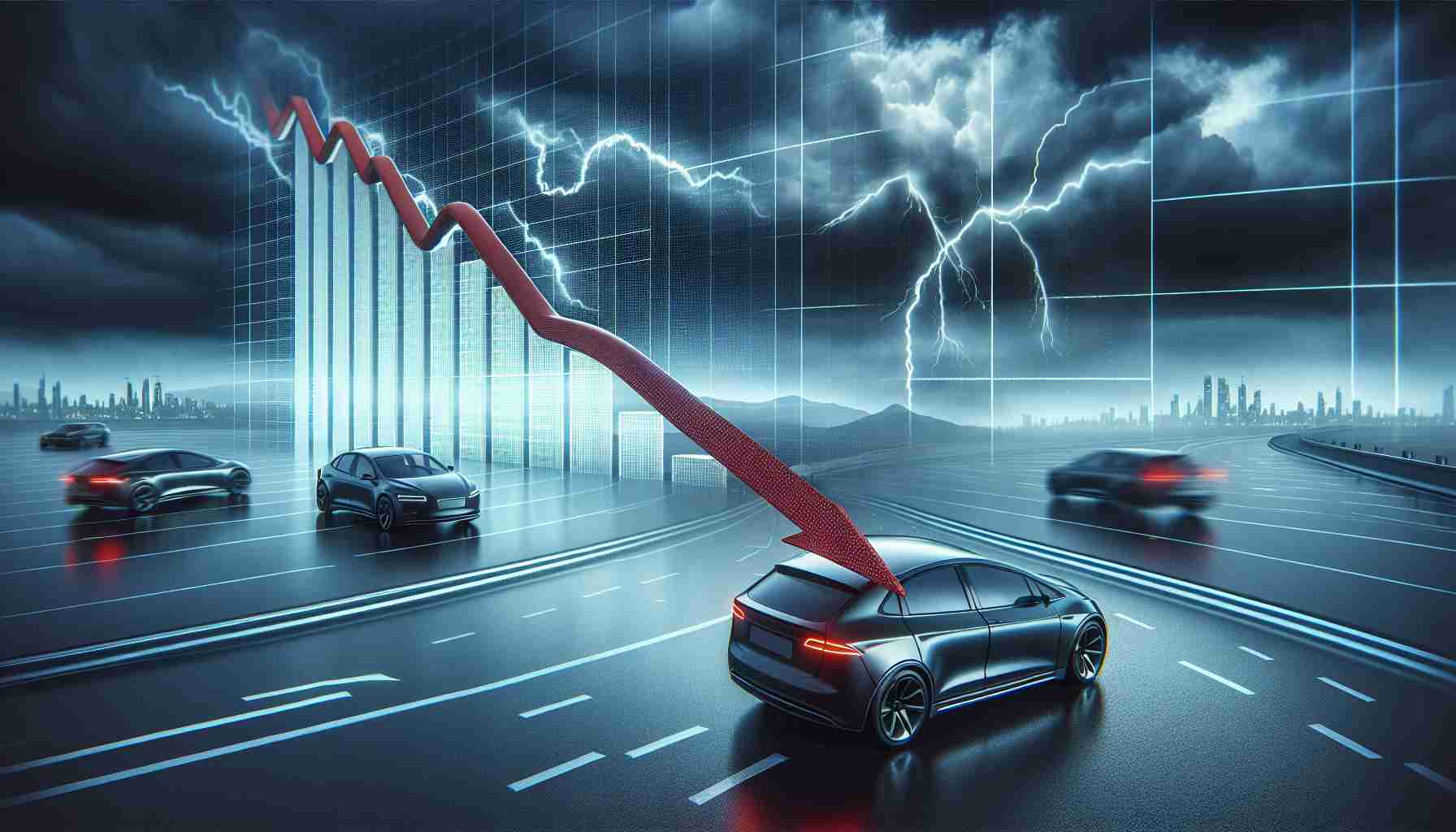- Tesla’s California registrations have declined, with a significant 36% drop in Model 3 sales.
- Tesla’s market share of zero-emission vehicles in California has decreased from over 60% to 52.5%.
- Increased competition from companies like Honda and Hyundai is challenging Tesla.
- Elon Musk’s political involvement and the company’s move to Texas might impact consumer perceptions.
- The Cybertruck’s initial sales have been lukewarm, suggesting innovation alone might not suffice.
- Tesla needs a strategy that balances innovation with sensitivity to consumer values and political climates.
- State policies, such as potential loss of EV rebates, create additional challenges for Tesla.
Tesla’s grip on the electric vehicle market is loosening as California registrations fall drastically. Despite the buzz surrounding the launch of its innovative Cybertruck, Tesla’s 2024 performance in its key market has been overshadowed by a 36% drop in Model 3 sales, leading to an overall 8% decrease in the last quarter. Once holding over 60% of zero-emission vehicle registrations, Tesla’s share now stands at 52.5%, according to recent reports.
California, a crucial stronghold for Tesla, highlights the pressure from increasing competition as rivals like Honda and Hyundai surge forward. This competitive landscape isn’t Tesla’s only hurdle. CEO Elon Musk’s noticeable involvement in partisan politics, coupled with the company’s headquarters move from California to Texas, stirs consumer unease and complicates its market position.
While the Cybertruck might introduce an exciting resurgence, its initial sales are tepid, indicating that product innovation alone isn’t sufficient. Tesla must pivot to address shifting consumer values and the politically charged atmosphere, especially in states predominantly favoring Democratic stances. The potential repercussions of state policies, such as losing access to EV rebates, add layers of complexity.
For Tesla to regain its reign, a strategy intertwining bold innovation with responsiveness to public sentiment is indispensable. The electric vehicle market’s future is vibrant with change, and Tesla’s agile adaptation will determine its standing. Can Tesla navigate these turbulent waters and reestablish its dominance in the ever-competitive EV battlefield? The next chapter in Tesla’s saga remains to be written, as the electric showdown escalates!
Tesla’s California Challenge: Can Innovation Outpace Competition?
How Is Tesla Adjusting to the Increasing Competition in the Electric Vehicle Market?
In recent years, Tesla has faced mounting competition in the electric vehicle (EV) market. New entrants like Hyundai and Honda have gained substantial ground, posing a challenge to Tesla’s dominance. To combat this, Tesla is emphasizing advancements in technology, efficiency, and charging infrastructure. However, it recognizes that innovation alone won’t suffice. Tesla is also focusing on enhancing its customer experience and expanding its global production capacity to meet diverse consumer demands.
What Are the Pros and Cons of Tesla’s Move from California to Texas?
Moving Tesla’s headquarters from California to Texas has sparked both opportunities and challenges.
Pros:
– Tax Incentives: Texas offers a more favorable business tax environment, potentially boosting profitability.
– Strategic Location: Texas provides a central location for logistics, enhancing supply chain efficiency.
Cons:
– Consumer Perception: The move has unsettled some of Tesla’s Californian customer base, who may feel alienated.
– Political Climate: Texas’s political environment differs from California’s, potentially impacting brand perception.
Tesla must weigh these factors carefully to maintain its market influence.
Can Tesla’s Cybertruck Break New Ground in the Electric Pickup Segment?
The Cybertruck has captured the public’s imagination with its futuristic design and promises of robust performance. However, initial sales have been lukewarm. To succeed, Tesla must address public concerns around durability, usability, and production timelines. Providing clear communication on delivery schedules and offering customization options could enhance consumer interest. As more automakers release electric pickup models, the Cybertruck must differentiate itself through unique features and a strong value proposition.
Market Analysis and Insights
The demand for electric vehicles remains strong, driven by environmental concerns and policy shifts favoring sustainable transportation. Tesla’s agility in adapting to these trends will be crucial. Emphasizing sustainability, enhancing vehicle affordability, and improving charging infrastructure can help Tesla regain lost ground. Expanding in emerging markets and leveraging its strong brand can further solidify its leadership in the EV industry.
Related Links
For more information on Tesla’s strategies and developments, explore the official Tesla website.



















